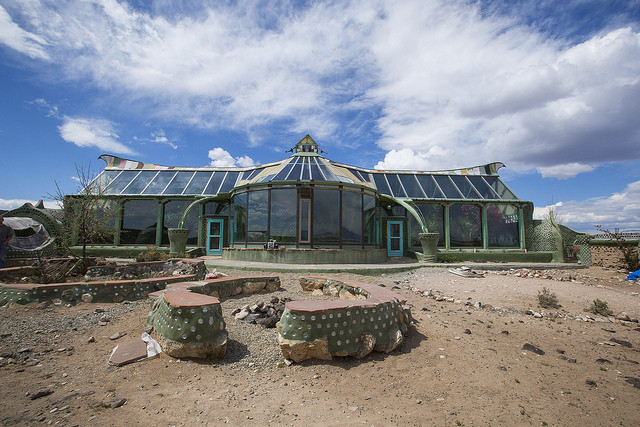Besides visiting the birthplace of European Commission president Jean-Claude Juncker and the Kropemanns fest, there are few obvious reasons to stop by in Redange. But, by 2020, the town will become a local ecological beacon as people flock to see its Äerdschëff (Earthship) training and education centre.
“The idea was to show different forms of living and construction. How to construct more ecologically, more sustainably and in a healthier way,” architect urbanist Annick Meiers of Cell told Delano.
The project began in 2015 when Cell founder Katy Fox formed a first pilot group. Fairly quickly it attracted the backing of rural development NGO Leader and a plot of land opposite the Atert high school was put aside. The volunteers secured funding through Oeuvre to support two full-time staff members to oversee the project and through the Kyoto Fund to finance construction.
Earthships were first developed in the 1970s as passive solar, off-the-grid houses made from natural or upcycled materials, often using earth-packed tyres. Pioneered by architect Michael Reynolds in the New Mexico desert, today there are around 2,000 globally. One of the principles of the earthship is sustainable construction materials--not so easy to equate with the high energy efficiency standards required of new construction in Luxembourg. “You can only reach these standards using materials which aren’t very ecologically-friendly,” Meiers explained.

Photo: Cell. From left: project managers Rodrigo Vergara and Annick Meiers with volunteers Sophia Hafner and Mattias Schwaitzer
Like many earthships, Redange’s will be constructed with old tyres supporting rammed earth on the outside. The inside will be lined with bricks made from miscanthus, a fast-growing type of grass found in Luxembourg. This material acts like “air conditioning”, according to the second half of the project team, Rodrigo Vergara. One side of the building will be glass while the roof will be insulated using shredded hemp fibres.
Because it will be a public building, the team had to compromise on the self-sufficiency principle. “The water administration won’t allow that,” Vergara said, adding: “We’ve one tap in the kitchen which is connected to the mains.” Since Redange gets its water from springs, this doesn’t feel like such a big compromise, Vergara said.
The rest of the water required will come from collected rainfall which is cleaned for drinking, washing and reused as greywater to irrigate the plants grown for food. What is more, once constructed, the centre will be a laboratory to test the water monitoring system of startup Blue Horizon. “They chose our site because it’s a closed loop to test their system,” Vergara explained.
Because of Luxembourg’s climate--long, dark winters and frequent rainfall during certain parts of the year, the building cannot rely on solar power alone, a staple for many earthships built in deserts. Photovoltaic panels will therefore be complemented by wind turbines, salt water batteries and a wood-burning stove.

Photo: Cell. A scale model of the proposed Redange Äerdschëff (Earthship)
“I don’t think the aim is to build all houses like this. It would be hard here in Luxembourg because we’ve limited amount of space and we need a lot of flats to be built,” Meiers said. But, she stressed it was important to push the construction industry to explore alternative materials. In a novel twist, the project helps spread the message virally even before its construction through inviting volunteers to help build it.
“It’s a participatory construction site where volunteers help and have experts on the site who will be able to show volunteers how a house can be built,” Meiers said, adding: “So, it’s about sharing knowledge and experiencing how to build a house. You could possibly use that experience and knowledge afterwards.”
The pair expect to receive the greenlight to begin construction soon. They hope to start work in 2019 and open the building up to the public by 2020. Ultimately, the centre will serve as an education centre but it is expected that eventually two European Voluntary Service volunteers will live at the site. Anyone interested in participating in building the earthship, should get in touch.
